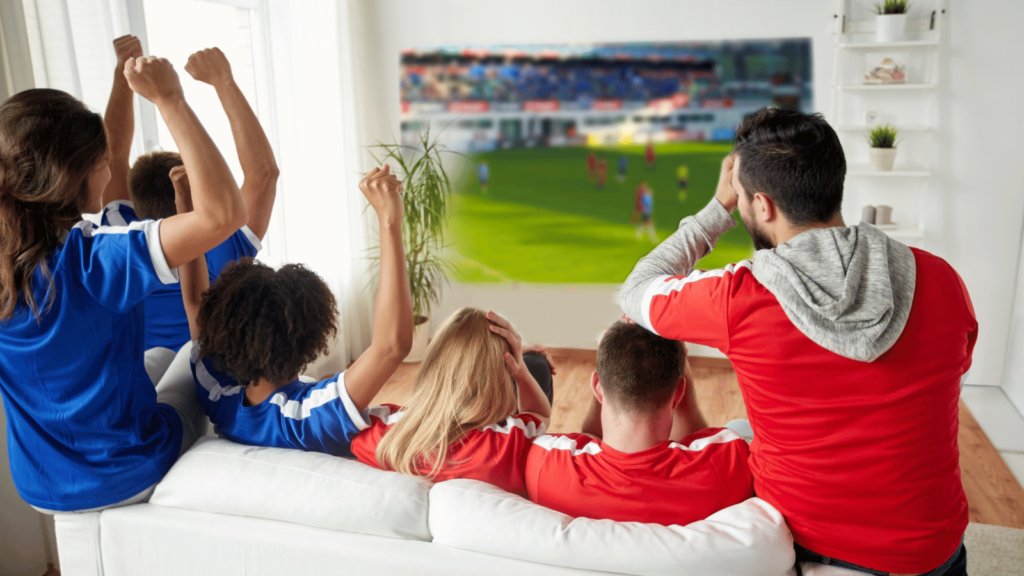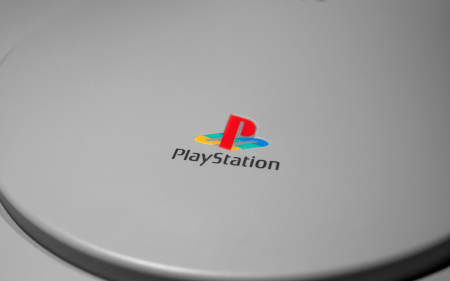So you consider yourself a sports fan, ‘ey? Are you the friend in the group that goes all out with snack platters during the game and tjops oppie braai after? Want to know how you can take your sports viewing up a notch or three? The place to start is with your TV and that’s where we come in.
If you’re thinking about upgrading your TV and know you’ll spend most of the time watching sports, we’ve put together a list of specs to keep in mind to ensure sports look their best. The only downside is now you can’t blame a blurry picture when you disagree with the ref and it turns out he’s right.
Say ‘no’ to blurry sports
 Unless your chosen sport is chess, the action is usually moving across that screen rather quickly. To see what’s going on you’ll want a TV that handles fast motion and combats blurriness well.
Unless your chosen sport is chess, the action is usually moving across that screen rather quickly. To see what’s going on you’ll want a TV that handles fast motion and combats blurriness well.
There are three factors that result in a blurry picture when watching fast-paced sports:
- A slow pixel response time – the pixels can’t keep up and react quickly enough to the TV’s changing instructions
- Conflicting content frame and TV refresh rate – when the frame rate of the content you’re watching doesn’t match the TV’s refresh rate
- Poor motion processing – the TV’s internal processor is slow or outdated
Most of the time, it’s all three. This is especially true of TVs that don’t cost that much. We aren’t specifically talking about cheap TVs (a relative concept). You can also find expensive TVs where the manufacturer has used poor-quality components and hiked up the price to make a fast buck. But generally, if you’re paying less than R10,000 for a 50in+ TV, sports probably aren’t going to look that great.
Obviously, a TV that ticks all three boxes will make for the best sports viewing but that’s not always going to be possible, particularly if you’re on a strict budget. Two out of three will do just fine. A TV with a native 120Hz refresh rate is a good point of reference. That isn’t to say it should be a strict requirement (some TVs perform admirably with 60Hz panels), but a 120Hz panel requires good internal hardware to keep up and usually indicates a good-quality TV.
There’s a catch though. You’ll notice we mention ‘native’ 120Hz. We make this distinction to save you from being bamboozled by TV manufacturers. Some manufacturers might use fancy-sounding words like ‘clear motion rate’ or ‘dynamic motion’ on the box. They’re trying to trick you into thinking you’re getting a high-refresh-rate TV when they’re just referring to the TV’s internal motion smoothing. It’s worth the hassle of checking the spec sheet to be sure you’re getting what you think you’re paying for.
Read More: LG C2 OLED evo TV review – Evolution in action
That isn’t to say motion smoothing is just a cheap trick. Almost every TV will offer some kind of motion smoothing. It goes by many different names but it works the same way, using some form of motion interpolation. That’s when the TV’s processor generates and inserts artificial frames between the original frames of the content to increase the content frame rate so that it matches the TV’s refresh rate. This can remove blur and sharpen the image, although most of the time it results in an image that looks too sharp or too smooth.
This setting is what causes content on some TVs to look ‘fake’, sometimes referred to as the ‘soap opera effect’. It’s one of the first things we turn off when we’re reviewing a TV as it messes with picture quality. If you don’t mind sacrificing quality a little to ensure you eliminate blur altogether, go ahead and leave it on. We won’t judge you.
You can’t always turn off the lights
Having a clear picture won’t do you much good if you can’t see it through glare or light reflections on the screen. Sure, a glossy finish will make colours pop but if there are fluorescent lights or a window behind you, those reflections could make everything appear washed out and bland.
If your TV doesn’t live in a room where you have absolute control over ambient light, you’ll want to make sure the TV you buy has good reflection handling. This is usually achieved with a matte film or coating over the screen to diffuse the reflected light but some LCD TVs use a polarising layer as well.
Read More: TCL C835 65in review – A not-so-mini mini-LED TV that really wants you to like it
Similarly, if you’re doing your watching in a bright room, you’ll need a bright TV. Most TV spec sheets will list the peak brightness, measured in ‘candela per square meter’ (cd/m2). While a figure of 300cd/m2 might not mean much to you on its own, you can use it to compare a TV’s relative performance to another. Take that measurement with a pinch of salt though. It is simply a measurement of how bright a TV’s panel can get. It isn’t comprehensive in conveying how well a TV handles that brightness and if it can accurately distribute said brightness to the parts of the scene that need it.
Time to huddle up
 If you aren’t planning on watching the game alone and want your guests to have a good time as well, a TV with good viewing angles is important. You might want to save the best seat for yourself but that doesn’t mean everyone else has to suffer.
If you aren’t planning on watching the game alone and want your guests to have a good time as well, a TV with good viewing angles is important. You might want to save the best seat for yourself but that doesn’t mean everyone else has to suffer.
Colour accuracy and overall picture quality will fade and drop off on a TV with poor viewing angles. Unfortunately, TVs that offer good viewing angles tend to be the more expensive models. You might have to sacrifice here if your budget is tight.
Did you hear the one about the TV with good audio?
Unless you’re prepared to throw large amounts of money at a high-end TV, you shouldn’t expect to be blown away by a TV’s audio performance. Most high-end TVs will feature support for at least one spatial audio technology, like Dolby Atmos. But in many cases, this will be simulated through software as opposed to a true surround setup. Even if the TV does have multiple physical speakers, you’ll be better off with an external multi-channel audio setup. If you can’t spring for that, a standalone sound bar is better in almost all cases.
Read More: Samsung 50QN90B Neo QLED TV review – Is this Neo going to be The One?
Another thing to consider is your prospective TV’s screen uniformity. It might not be a dealbreaker, but a TV with noticeable light and dark patches becomes distracting very quickly. This is called the ‘dirty screen effect’ and comes down to what’s known as the ‘panel lottery’, referring to the gamble you take on the panel of your new TV.
Unfortunately, there’s no way of knowing if your panel is a dud before you plug it in and switch it on. We’d recommend making sure that wherever you buy from offers a good return policy. Then, as soon as you’re able, get it out of the box, plug it in, and play this video. You should be able to tell relatively quickly if your panel suffers from DSE and get on with the return process before you’ve even mounted it on your wall.
A few extra things to consider
So you’ve bought a TV that fits your budget and ticks all the boxes for sports. You get it out of the box, switch it on to check for DSE, then set it to the ‘Sports’ or ‘Vivid’ profile. Mission accomplished right? No, more like mission failed successfully. Those profiles tend to throw picture quality and colour accuracy out the window and just crank up brightness and saturation.
Read More: Hisense U9G 75in TV review – One way to realise that size isn’t everything
This is mostly done so that the TV can stand out among the countless other brands in big box stores with fluorescent lights blaring down on them. You’re far better off using the ‘ISF Expert Bright room’, ‘Cinema’, or ‘Filmmaker’ mode if your TV has them and turning up the backlight setting. If those aren’t available, stick to the standard mode and increase the brightness.
After all that, even the best TV picture will only look as good as the source allows. While a high-end TV with great processing might upscale the 1080i signal from DStv to look nearly as good as a native 4K image, it can’t do much to improve the bitrate and bit depth of the signal which are just as important as resolution in delivering a good-looking image.
That’s not really DStv’s fault, although it does tend to play catch-up with new tech. Broadcasting sports requires a lot of bandwidth so a 4K satellite signal is uncommon, even in ‘advanced’ countries.
To get the most out of your new TV, we’d recommend streaming your sports wherever possible. DStv recently announced that it aims to stream the Rugby World Cup in 4K later this year, as it did with the Fifa World Cup last year. If you want to cash in on the increased picture quality, you’ll need an Explora Ultra decoder, a Streama media box, or a Showmax Pro subscription.




